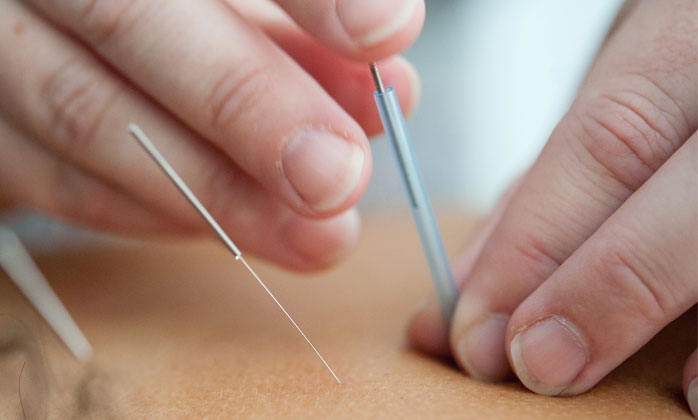

Acupuncture is an ancient form of Chinese medicine involving the insertion of solid filiform acupuncture needles into the skin at specific points on the body to achieve a therapeutic effect. No drug is injected. The needles alone create the beneficial effects of acupuncture.
Acupuncture is used to encourage natural healing, improve mood and energy, reduce or relieve pain and improve function of affected areas of the body. It is safe and effective and is often successfully used as an alternative to medications or even surgery. Relief is often obtained with acupuncture when traditional medical therapy has failed.
Acupuncture needles are solid, usually stainless steel, and measure from 13-70 mm. The needles are very fine, flexible and rounded but sharp at the tip. They are ‘atraumatic’, meaning that they do not have a cutting edge like a hypodermic needle, which slices through tissue. Their design allows acupuncture needles to slide smoothly through tissues and makes them unlikely to cause bleeding or damage to underlying structures.
Acupuncture points are places on the skin that have a lower resistance to the passage of electricity than the surrounding skin and are part of a network of points that were mapped centuries ago by the Chinese. Most are found along ‘meridians’ or ‘channels’ that are believed to be the pathways by which energy or Qi (pronounced ‘Chee’) flows through the body. Acupuncture points are located either by identifying anatomical landmarks or by the classical mapping method.
For more information on Traditional Acupuncture, visit the Acupuncture Foundation of Canada Institute.
Contemporary Medical Acupuncture is a precise peripheral nerve stimulation technique, in which acupuncture needles are inserted into anatomically defined neurofunctional sites, and stimulated with electricity for the therapeutic purpose of modulating abnormal activity of the nervous system. This differs from Traditional Chinese Acupuncture where acupuncture points follow meridians on the body.
Contemporary Medical Acupuncture is mechanism-based, not disease-based. Therapeutic goals and treatment targets are selected based on the identified neurological dysfunctions contributing to the clinical presentation of the symptoms. “Neurofunctional Acupuncture” is a physiological intervention similar to exercise that elicits the up-regulation and down-regulation of specific cellular processes.
There is a long list of positive neuro-physiological effects of Neurofunctional/Contemporary Medical Acupuncture including:
For more information on Contemporary Medical Acupuncture, visit McMaster University’s Contemporary Medical Acupuncture website.
Dry Needling is an effective therapy to treat muscular tension and spasm which commonly accompanies conditions such as arthritis, nerve irritation, muscular strain, ligament strains and herniated discs. Treatment utilizes acupuncture needles to specifically target injured muscles that have contracted and become shortened from distress. Dry Needling is also known as Trigger Point Dry Needling or IMS (Intramuscular Stimulation).
When an injury occurs from repetitive use or acute trauma, inflammation will be produced from the damaged tissues. The damaged tissues will also go into a protective tension state or contracture to guard against further damage from utilizing the injured tissue. This contracture and inflammation inhibit microcirculation which limits both the oxygen rich blood reaching the injury and the waste products leaving the injury. The injury site becomes hypoxic (decreased in oxygen) which stimulates the body to produce fibroblasts, a cell that produces fibrosis or scar tissue. This fibrosis and scarring builds up around the muscles and tissues limiting the tissues ability to fully function (lengthen/shorten) and can also cause compression and irritation of nerves.


Dry Needling uses a small, solid filament needle which is inserted in a contracted painful knotted muscle to create a local twitch reflex which is both diagnostic and therapeutic as it is the first step in breaking the pain cycle as research shows will decrease muscle contraction, reduce chemical irritation, improve flexibility and decrease pain. When a needle is inserted into muscle it will also produce a controlled lesion and will cut between three to fifteen thousand individual muscle fibers. The body considers the needle as a foreign invader and will activate the immune system as a response. The cut muscle fibers also produce an inflammatory reaction that your body will respond to not just locally but all over the body to reduce inflammation systemically.